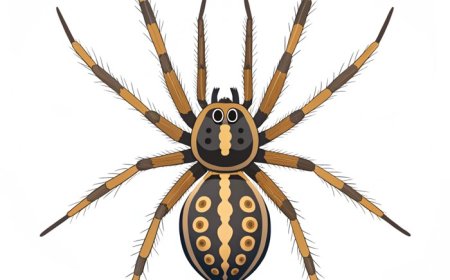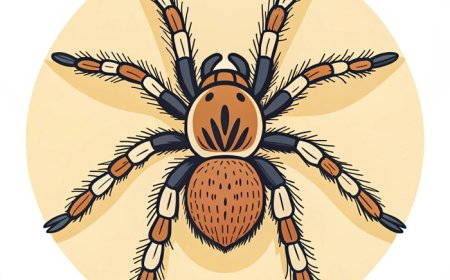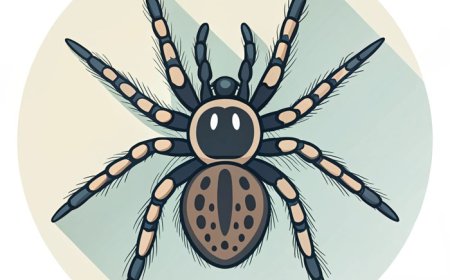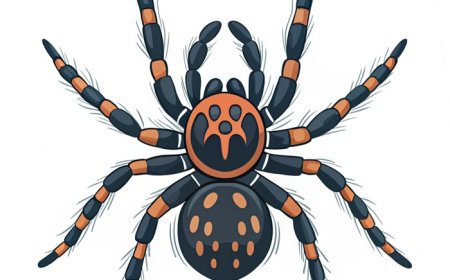Black Widow Spider Guide: Nature’s Most Famous Venomous Spider
Discover the truth about the black widow spider. Learn where it lives, how to identify it, what its venom does, and why it’s more shy than scary.
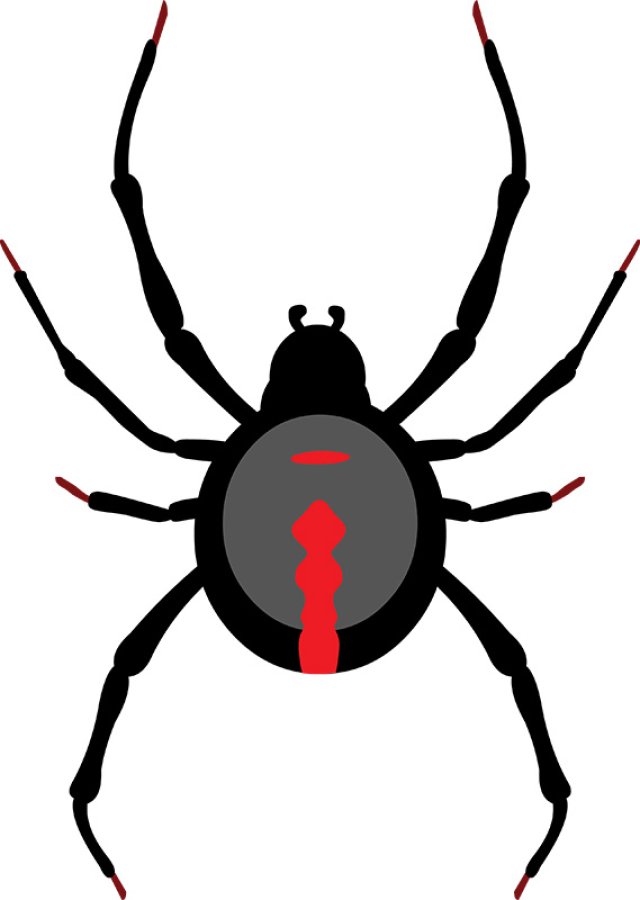
🕸️ Introduction
The black widow spider is one of the most well-known spiders in the world, famous for its glossy black body and the red hourglass marking on its belly. Its name and reputation can sound scary, but black widows are actually shy and quiet creatures that avoid humans whenever possible. Although they do have strong venom, they rarely bite, and they play an important role in keeping insect populations under control.
Found mostly in North America, but also in other warm parts of the world, black widow spiders live in dark, hidden places and spin messy webs to catch prey. Learning about black widows helps remove fear and replace it with knowledge, understanding, and respect for how these spiders fit into nature’s web.
🕵️♀️ How to Identify a Black Widow Spider
Black widow spiders are small to medium-sized arachnids, usually about 1.5 inches (3.8 cm) long, including their legs. The most recognizable black widow is the female, with her shiny, smooth black body and the bright red hourglass shape on the underside of her round abdomen.
Males are smaller and lighter in color, sometimes brown or gray, and they usually don’t have the red marking. Because the female is more noticeable and has stronger venom, she is the one most people think of when they hear the name “black widow.”
Another clue that you’ve found a black widow is its web. These spiders spin irregular, tangled webs, often near the ground in dark, quiet places like under rocks, logs, sheds, porches, or garden furniture.
🧪 What Makes Their Venom Special?
Black widow spiders are known for having powerful venom, which they use to paralyze and digest their prey, usually insects like flies, beetles, and grasshoppers. The venom affects the nervous system, which is why it's considered dangerous.
While a black widow bite can be painful and cause symptoms like muscle cramps, nausea, or sweating, it is rarely deadly, especially if treated promptly. Healthy adults usually recover fully, and very few bites result in serious harm thanks to modern medicine. Most black widows only bite when cornered, trapped, or accidentally touched.
🍽️ What Do Black Widow Spiders Eat?
Like many spiders, black widows are carnivores that hunt by building sticky webs. They wait patiently in or near their web until an insect gets tangled. Then, the spider quickly moves in to bite and paralyze the prey before wrapping it in silk.
After the prey is secure, the spider injects digestive enzymes and waits for the insides to become a liquid meal. Black widows eat flies, mosquitoes, beetles, ants, and other small bugs, helping control pest populations.
🧵 Do They Spin Webs?
Yes! Black widow spiders spin webs, but unlike the round, neat orbs made by orb-weavers, their webs are messy, tangled, and irregular. These webs are often found near the ground in sheltered, shadowy areas.
Black widows usually hide in a small retreat at the top or side of the web and come out only when prey gets stuck. They are not aggressive hunters—instead, they let their web do the work and wait for vibrations to signal a catch.
🌍 Where Do They Live?
Black widow spiders are found in many parts of the world, including North America, Central and South America, Africa, southern Europe, and parts of Asia and Australia. In the United States, they are most common in the southern and western states, especially in dry, warm climates.
They prefer quiet, hidden spaces and are often found in woodpiles, garages, basements, sheds, crawl spaces, or under outdoor furniture. Because of their secretive nature, people are often unaware they are nearby.
🐣 Life Cycle and Behavior
After mating, the female lays hundreds of eggs in a silk egg sac, which she guards carefully. The eggs hatch into tiny spiderlings, which look like miniature adults. Most of them will spread out quickly to build webs of their own.
Females are famous for a behavior that gave the spider its name: sometimes, they eat the male after mating—hence the name "black widow." However, this behavior is not common in the wild and mostly occurs in captivity or under stress.
Black widows are nocturnal, meaning they are active at night, and they rarely move far from their web unless disturbed.
🌟 Fun Facts About Black Widow Spiders
The red hourglass warning mark helps predators know that the black widow is venomous.
A black widow’s venom is 15 times stronger than a rattlesnake’s—but it uses a much smaller amount.
Only the female has the famous red hourglass and strong venom.
Black widows are shy and will not bite unless threatened.
The web of a black widow spider is strong and sticky, making it very effective at catching insects.
👧 Kid-Friendly Summary
Black widow spiders are famous for their shiny black body and red hourglass shape. They live in dark, quiet places and spin messy webs to catch bugs. Even though they have strong venom, they are very shy and don’t want to bite people. They help control insects and are part of nature’s team of hunters.
📚 Vocabulary Words
Black widow – A type of spider known for its black body and red hourglass shape
Venom – Poison used by animals to capture prey or defend themselves
Digestive enzymes – Chemicals that break down food so it can be eaten as liquid
Nocturnal – Active at night
Tangled web – A messy web used by some spiders instead of a neat orb
Arachnid – A group of animals that includes spiders, scorpions, and ticks
Camouflage – Coloring or behavior that helps an animal hide
Spiderling – A young spider that just hatched
❓ Interactive Quiz (8 Questions)
1. What color is the black widow spider’s famous marking?
A. Blue
B. Green
C. Red
D. Yellow
2. What shape is the marking on the black widow’s abdomen?
A. Triangle
B. Hourglass
C. Circle
D. Star
3. Do black widow spiders build neat, circular webs?
A. Yes
B. No, their webs are messy
C. Only in winter
D. Only as babies
4. What do black widow spiders eat?
A. Grass
B. Flies and bugs
C. Fruit
D. Wood
5. Are black widow spiders aggressive?
A. Yes, very
B. Only to birds
C. No, they are shy
D. Only when flying
6. Where are black widows often found?
A. In oceans
B. In warm, dark places like sheds
C. In bird nests
D. On icy mountains
7. What happens if you get bitten by a black widow?
A. You grow wings
B. You turn into a spider
C. You may feel sick, but it’s rarely dangerous
D. Nothing at all
8. What does the black widow use venom for?
A. To color its web
B. To dig burrows
C. To catch and digest prey
D. To stay warm at night


















































